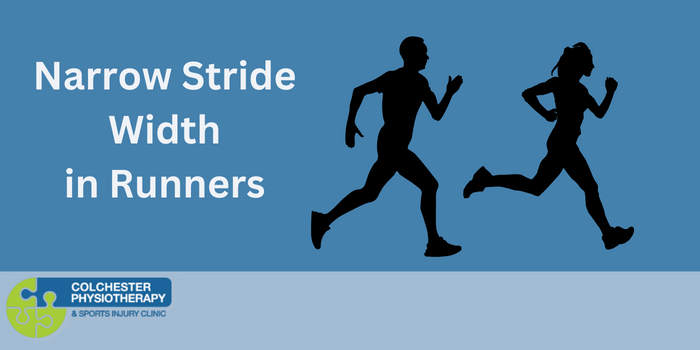Narrow Stride Width in Runners
Posted on 28th March 2019 at 11:11
By Craig Fowlie
In this article, we will explain narrow stride width in runners. We will look at how it can affect you and the long term repercussions to your body. We shall provide our recommendations and advice to help alleviate these repercussions. If you do require further assistance, please get in touch with our team today.
When stride width is narrow, the foot lands more centrally to the hip joint. This increases the force required for the hip muscles to control movement of the pelvis and lower leg. It leads to an increase in stretching forces of tissue on the outside of the leg and compressive forces on the inside of a leg.
In our clinic, we see many problems arise when the soft tissue of the body is unable to cope with the forces associated with narrow stride width:
ITB syndrome
Medial tibial stress syndrome (shin splints)
The body will readjust to the style of running you choose, so narrow stride width does not necessarily need to be corrected. If you experience some of the mentioned symptoms in your lower limb, increasing stride width may give your body time to recover. Your body will adapt without having to stop running.
It is important when trying to increase stride width that you do not complicate things and maintain a fluid style. Imagine the line in front of you where your feet would land when running with your normal style and extend this width by a couple of centimetres.
When changing your running style, it is important that changes are introduced gradually. I recommend to my clients that this should be for about 60 seconds during every mile run.
Once you get used to this, then it is up to you whether you want to integrate the new running style or use it as a tool periodically. This can help to reduce load associated with your normal running style.
At Colchester Physiotherapy & Sports Injury Clinic, we are able to give advice, recommendations and treat issues that may arise with a narrow stride width. Get in touch with our experienced team today or book an appointment today.
Author
Craig Fowlie

Craig is a highly specialized physiotherapist with post graduate qualifications in Acupuncture and Sports and Exercise Medicine.
He has worked with Professional Rugby sides in New Zealand and has assisted Great Britain Table Tennis at the World Team Championships and Olympic Qualifiers in Qatar and Germany. He is a consultant for the Governments Talented Athlete Scholarship Scheme and has published and presented research in the Journal of Physiotherapy and the Chartered Society of Physiotherapy Annual Conference.
Outside of work he enjoys participating socially in triathlon and running.
Share this post:







